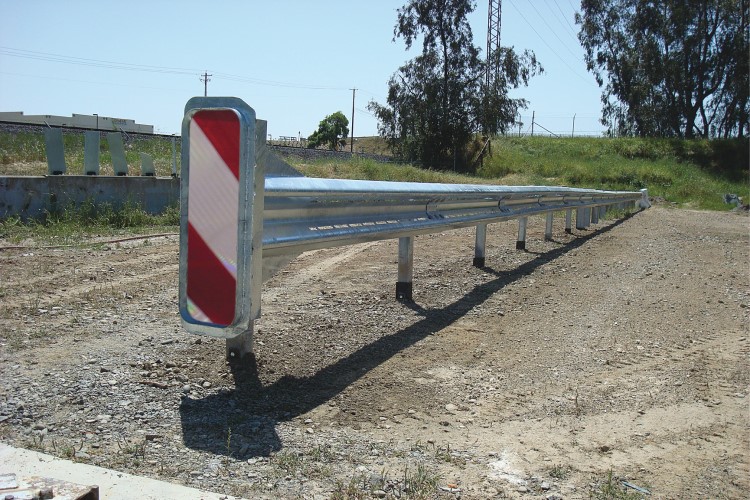A guardrail is a type of barrier that prevents a road user’s vehicle from straying off the safe road path into an obstacle at the side of the road, or into a pedestrian or cyclist. It also has the purpose of reducing the severity of an accident related to an errant vehicle leaving the safe travel path and then going down an embankment or mountainside, or into a body of water.
Since the guardrail is in a certain way a hazard itself, careful consideration must be given to its instalment at places where protection against even more hazardous objects is important. If the road usage is safe enough without a guardrail in place, the best option is to go without it. However, where there is, for instance, a sharp curve in the road with a risk that a fast-moving vehicle may stray from the safe travel path without enough space to correct the error, installation of such a guardrail should be considered. This would be the case where there is an embankment at the curve or perhaps an unforgiving object such as a tree, wall, cliff face, or body of water.
The W-beam guardrail system is widely used because of its durability, the length of travel path that can be protected, and the strength of the system. Its design is intended to ensure deflection upon side impact. A vehicle colliding with the barrier from the side can be guided back into the original safe travel path. The friction caused by the side impact also allows for the slowing down of the errant vehicle. If a road user, for instance, falls asleep while driving and the vehicle veers to the side, the barrier prevents it from breaking through into hazardous terrain or into an unforgiving object. Upon side impact, the vehicle is guided back into the safe travel path, giving the road user time to wake and respond to the situation. The rail height plays an important role in its effectiveness in preventing large vehicles with higher ground clearance from moving over the rail or from becoming airborne upon impact. As such, the appropriate guardrail height is determined by the roads authorities for any particular stretch of road by considering all the factors that may influence it.
In an urban area where pedestrian or cycle paths are protected from vehicles accidentally straying onto these paths, the guardrails are often lower. The vehicles travel at lower speed and the risk of moving over the rails due to high speed at impact is thus lower. The guardrail system functions as a whole. The posts to which the steel beams are attached are made of wood or steel. The individual posts are not strong enough to prevent breakthrough; however, with panels attached to many planted posts, the system is strong enough to withstand impact and prevent breakthrough. The rail is fitted with highly visible delineators that serve to warn road users of the presence of the barrier. This is also important for indicating a curve in the road. Because of the type of paint used, the delineators are highly visible in low-light conditions.
It is just as important to ensure that the end of the rail does not become a hazard, so the guardrail’s end is often sloped and buried. In many instances, highly visible end-terminals are installed. These end treatments prevent piercing of the vehicle upon impact with the end of the guardrail. The impact resistance and deflection capacity of the barrier system come from the combination of the panels’ flexural stiffness and the bending or shearing resistance of the steel or wooden posts to which the steel beams are attached. As such, it is important to install systems made of products that meet specific manufacturing and safety standards. The connections of the beam to the posts and the end terminals are also important, in addition to the depth of the posts in the soil. To this end, it is important to follow the manufacturer’s installation guidelines to ensure maximum effectiveness of the system in redirecting vehicles or preventing the vehicles from breaking through or vaulting over upon impact.
View and download our brochure for our Armco thrie-beam guardrail system and call us to discuss your particular traffic-barrier needs.

